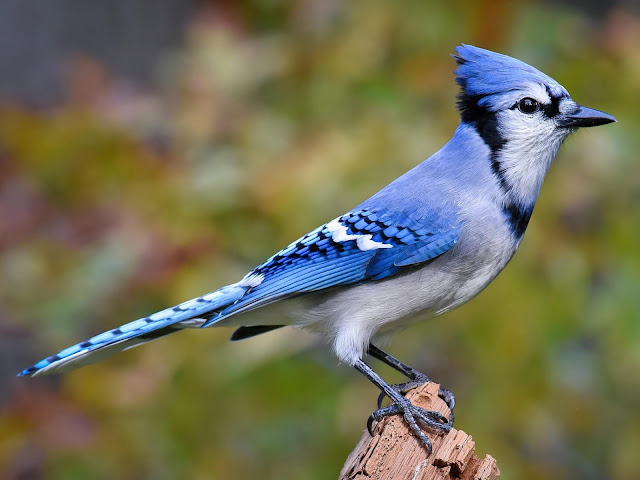The Blue Jay (Cyanocitta cristata)
The Blue Jay (Cyanocitta cristata) is a striking and magnetic bird species local to North America.
The Blue Jay (Cyanocitta cristata) is a striking and magnetic bird species local to North America. Known for its lively blue plumage, strong character, and unmistakable vocalisations, the Blue Jay is a typical sight in numerous metropolitan and rural regions. In this article, we will investigate the entrancing universe of the Blue Jay, including its appearance, natural surroundings, conduct, diet, rearing propensities, preservation status, and importance in mainstream society.
Appearance:
The Blue Jay is a medium-sized warbler, estimating around 25 to 30 centimetres (9.8 to 11.8 inches) long, including its long tail. It has a hearty form with a peak on its head that can be raised or brought down depending on its mindset. The plumage of the Blue Jay is transcendentally blue, with a dynamic blue variety on its wings, back, and tail. It has a white underside, dark bars on its wings and tail, and a dark collar around its neck. The Blue Jay likewise has striking dark markings around its face, including a dark line through the eye and a dark fix behind the snout.Habitat:
Blue Jays are tracked all through eastern and central North America, going from southern Canada to the Bay Coast. They occupy different forested living spaces, including deciduous and blended backwoods, as well as lush rural regions and parks. Blue Jays are versatile birds and can likewise be found in metropolitan areas where there are appropriate trees for settling and more than adequate food sources.Behaviour:
Blue Jays are exceptionally vocal and have many calls and tunes. They are known for their uproarious and unmistakable "jay" call, which can be heard from a good distance. Blue Jays are clever and inquisitive birds, frequently investigating their environmental factors and researching new items. They are additionally friendly birds and are regularly seen in little family gatherings or larger groups, particularly throughout the cold weather months.Diet:
The eating regimen of the Blue Jay has changed and incorporates both plant and animal matter. They are omnivorous, benefiting from a large number of food sources like oak seeds, nuts, seeds, natural products, bugs, little vertebrates, and sporadically bird eggs and little birds. Blue Jays are known to reserve food items, putting them away for later utilisation. They have specific throat pockets that permit them to convey various food items on the double.Breeding:
Blue Jays are monogamous and form long-haul pair bonds. Rearing season commonly happens from Spring to July, with varieties relying upon the geological area. During romance, the male performs showcases to draw in a mate, including wing flicking, bowing, and vocalisations. When a couple structures, they cooperate to fabricate a home, which is typically situated in the fork of a tree or bush.The female Blue Jay lays a clutch of 2 to 7 eggs, which she broods for around 16 to 18 days. The two guardians alternate hatching the eggs and taking care of the chicks. In the wake of bringing forth, the chicks are altricial; they are conceived exposed and vulnerable, which means they They depend on their families for food and security. The youthful birds fledge and leave the nest after roughly 17 to 21 days, yet they might keep on getting parental consideration for a couple of additional weeks.
Protection Status:
The Blue Jay isn't, as of now, thought to be a type of protection concern and is recorded as a type of Least Worry on the Worldwide Association for Preservation of Nature (IUCN) Red Rundown. The number of inhabitants in Blue Jays stays stable, and they have effectively adjusted to human-changed conditions like metropolitan and rural regions. Their flexibility, generalist diet, and capacity to use different natural surroundings have added to their endurance.
importance in Mainstream society

.png)

